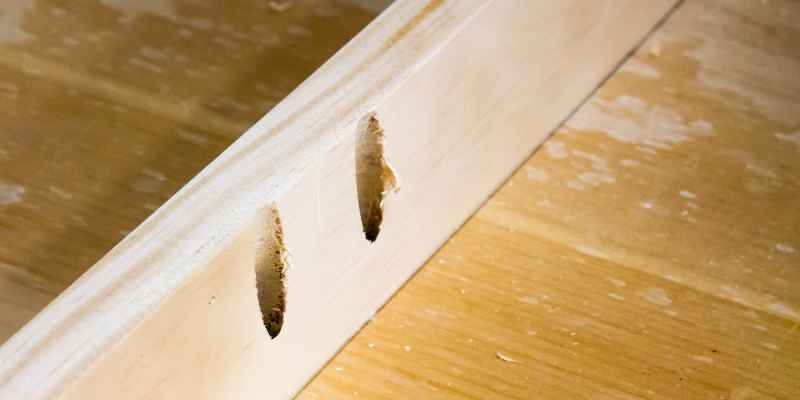To join plywood with screws, align the pieces and drill pilot holes to prevent splitting. Then, drive in the screws for a secure connection.
Plywood is a versatile material used in various projects, from furniture to home construction. Joining plywood with screws offers strength and durability, making it an ideal choice for both professionals and DIY enthusiasts. Proper techniques ensure the joint withstands stress and maintains its integrity over time.
Understanding how to effectively use screws can enhance the quality of your work. This guide will provide you with essential tips to create strong, lasting joints. By mastering these methods, you can confidently tackle a variety of woodworking projects and achieve professional results. Let’s explore the best practices for joining plywood with screws.
Introduction To Plywood Joinery
Plywood joinery is a popular choice for many DIY projects. Using screws offers several benefits. They provide strong and durable connections. Screws are easy to remove and replace if needed. This flexibility makes them ideal for changing designs.
Different types of plywood suit various projects. Softwood plywood is great for furniture and cabinets. Hardwood plywood works well for fine projects, like tabletops. Marine plywood resists water and is perfect for outdoor use. Choosing the right type of plywood ensures a successful project.

Essential Tools And Materials
To join plywood with screws, gather the right tools. Here’s a list of essential tools:
- Drill – For making holes and driving screws.
- Screwdriver – To tighten screws securely.
- Wood clamps – These hold the plywood together.
- Measuring tape – Helps measure and mark accurately.
- Square – Ensures your cuts are straight and angles are correct.
Selecting the right screws is crucial. Use wood screws for plywood. They grip better and provide strong support. Choose screws that are long enough to penetrate both sheets of plywood.
Consider screw diameter. A diameter of 1/8 inch works well for most projects. Always pre-drill holes to avoid splitting the wood. This step ensures a clean and strong joint.
Preparation Steps Before Joining
Before joining plywood with screws, proper measuring and marking is essential. Use a tape measure for accurate lengths. Mark both sides of the plywood for better visibility. A square can help ensure straight lines.
For cutting the plywood, use a sharp circular saw or jigsaw. Always wear safety goggles to protect your eyes. Follow the marked lines carefully for clean cuts. Check twice before making any cuts to avoid mistakes.
Drilling Pilot Holes
Pilot holes are important for joining plywood with screws. They help prevent splitting and cracking. Without pilot holes, screws can break or make the wood weak. Properly drilled pilot holes ensure accuracy and strength in your project.
To drill accurate pilot holes, follow these steps:
- Choose a drill bit that matches your screw size.
- Mark the spot where you want to drill.
- Use a clamp to hold the plywood securely.
- Drill straight down at a right angle.
- Make sure to drill deep enough for the screw length.
Joining Techniques For Plywood
Joining plywood can be done effectively with screws. For edge to edge joining, align the edges tightly. Use screws to hold the pieces together. Make sure to drill pilot holes first. This prevents the wood from splitting.
End to face joining requires a different approach. Apply wood glue on the face of one piece. Then, align the end of the other piece. Use screws to secure them together. This method creates a strong bond.
| Joining Method | Steps |
|---|---|
| Edge to Edge | Align edges, drill pilot holes, and insert screws. |
| End to Face | Apply glue, align pieces, and secure with screws. |
Tips For Tightening Screws
To avoid over-tightening screws, use the right size screwdriver. This helps prevent damage to the plywood. Always apply steady pressure while tightening. Check the fit after a few turns.
Ensuring even pressure is crucial. Tighten screws in a cross pattern. This helps distribute the force evenly. Start with the center screws, then move outward. Regularly check the alignment as you work.
Finishing Touches
Sanding the joints is important for a smooth finish. Use fine-grit sandpaper. Sand in the direction of the wood grain. This helps avoid scratches and keeps the surface even.
After sanding, clean the area to remove dust. A damp cloth works well for this. Let it dry completely before applying any finish.
Choose a suitable finish or paint for your project. Oil-based finishes give a rich look. Water-based options dry faster and have less odor.
Apply the finish with a brush or cloth. Use even strokes to avoid drips. Let it dry as per the manufacturer’s instructions for best results.
Maintenance And Repair
Regular maintenance keeps your plywood joints strong. Check screws for tightness often. Loose screws can cause damage. Tighten them with a screwdriver as needed.
Inspect the joints for any signs of wear. Cracks or splits in the wood need attention. Replace damaged screws with new ones. Use the right size for a secure fit.
Apply a wood glue for extra strength. This helps to hold the plywood together better. Wipe off excess glue with a damp cloth.
Store plywood in a dry area. Moisture can weaken joints and cause warping. Cover wood with a tarp if stored outside.
Safety Considerations
Always wear safety glasses to protect your eyes. Use ear protection if tools are loud. Gloves can help prevent cuts. Make sure to wear non-slip shoes for better grip.
Tools should be handled with care. Always keep your workspace clean to avoid accidents. Check tools for damage before using them. Use tools as they are intended. Never rush while using screws or drills.
Creative Project Ideas
Plywood is great for making furniture. Use screws to join pieces securely. Create tables, chairs, and shelves with ease. Choose the right screw size for your project.
Home decor can also benefit from plywood. Build stylish storage solutions like cabinets and bins. Customize your designs to fit any space. Use screws to ensure strong joints.
Consider making a plywood bench for your entryway. It adds style and function. A plywood coffee table can be a unique centerpiece. Use your creativity to design amazing projects!

Frequently Asked Questions
How Do I Choose Screws For Plywood?
Selecting the right screws for plywood involves considering length and thread type. Generally, wood screws or self-tapping screws are ideal. Ensure the screw length is about 1. 5 times the thickness of the plywood. This provides strong holding power without splitting the wood.
Can I Use Regular Screws For Plywood?
While you can use regular screws, it’s best to use wood screws. Wood screws have deeper threads, which grip better in plywood. Regular screws may not provide adequate holding power, leading to potential joint failure. Always opt for screws designed specifically for wood applications for the best results.
What Is The Best Way To Join Plywood?
The best way to join plywood is by using screws and adhesive. First, apply a suitable wood glue to the edges. Then, drive screws through the joint for added strength. This combination ensures a strong bond and reduces the risk of separation over time.
How Far Apart Should Screws Be In Plywood Joints?
Screws in plywood joints should be spaced about 6 to 12 inches apart. This spacing offers sufficient support while minimizing the risk of splitting the wood. Adjust the spacing based on the thickness of the plywood and the type of joint you are creating.
Conclusion
Joining plywood with screws is a straightforward process that enhances durability. With the right tools and techniques, you can achieve strong, lasting connections. Remember to choose the correct screw type and pre-drill to avoid splitting. Mastering these skills will elevate your woodworking projects and ensure professional results every time.

